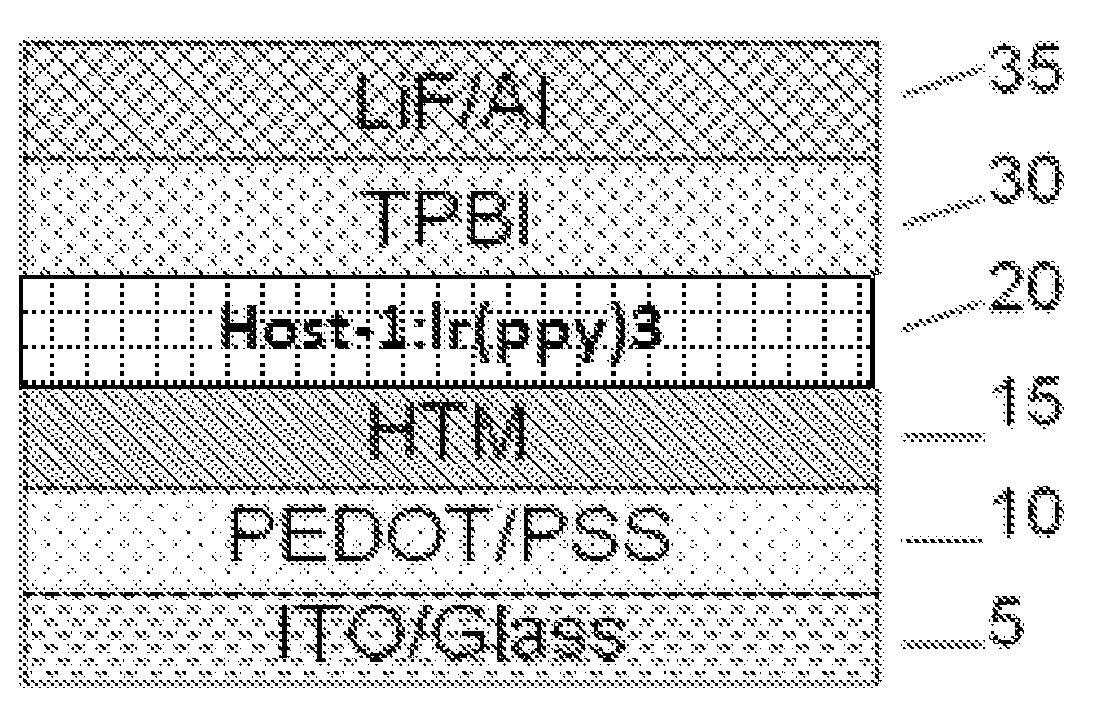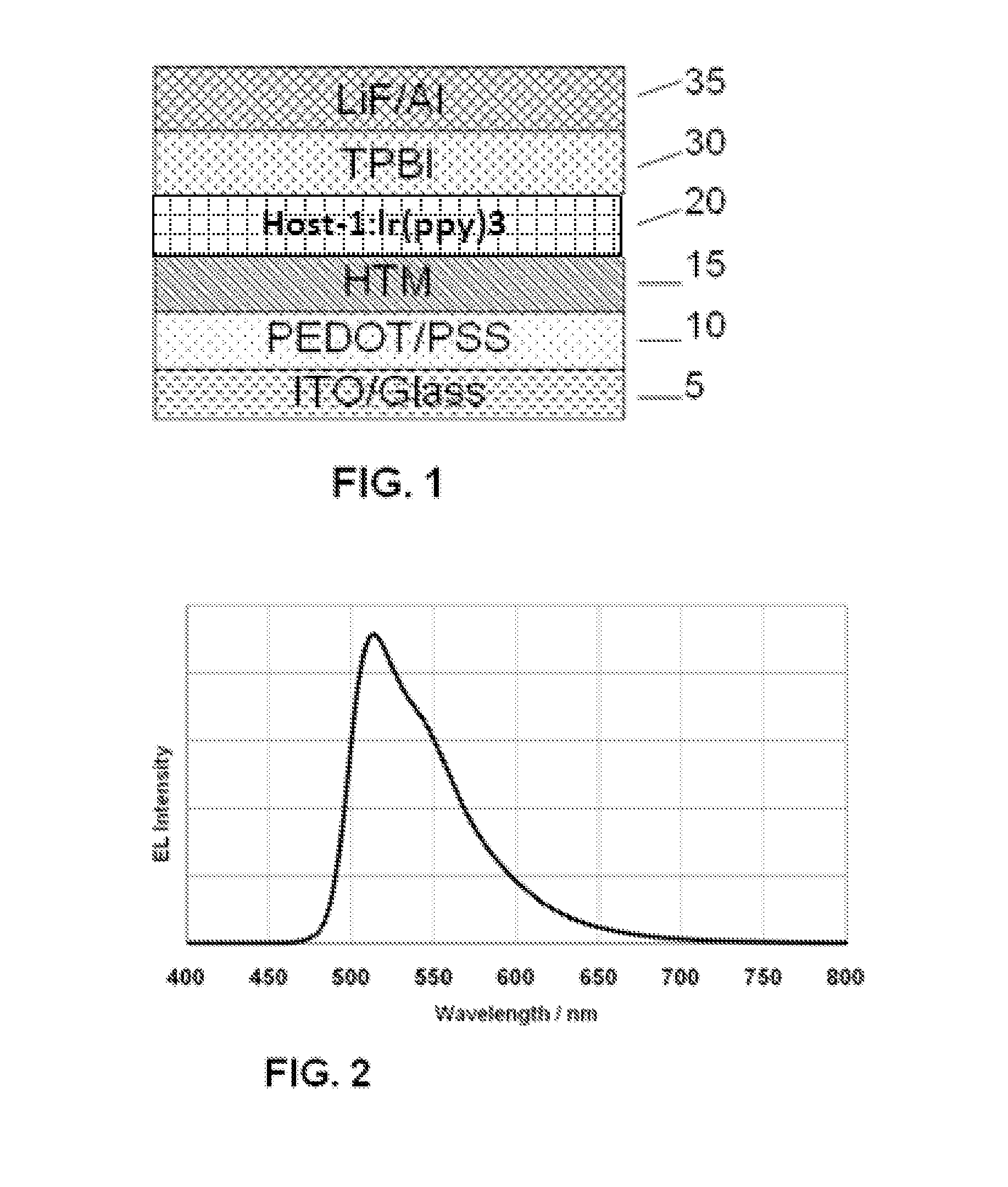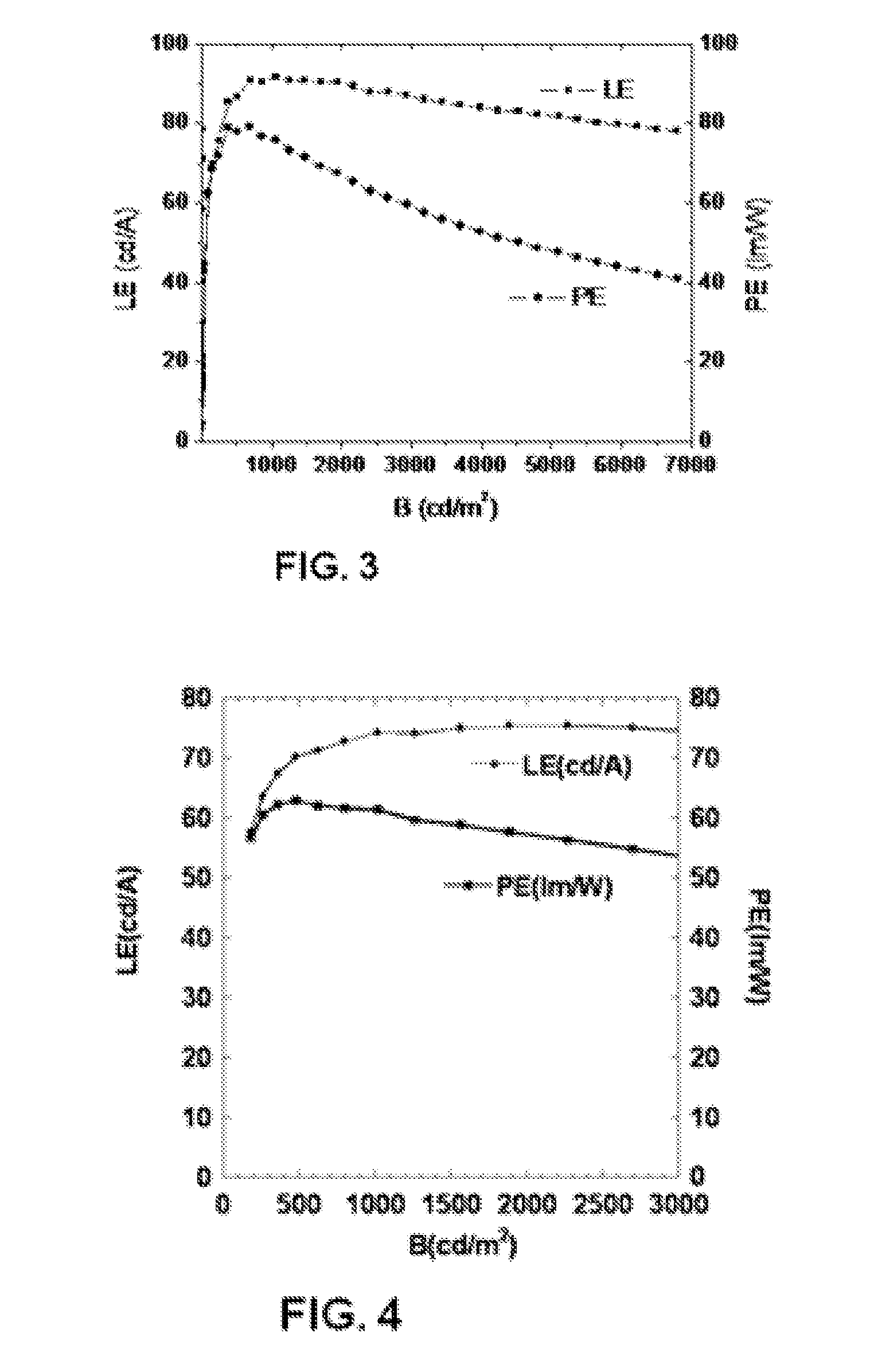Tetraphenylsilane compounds suitable as organic hole-transport materials
a technology of tetraphenylsilane and organic hole, which is applied in the direction of organic chemistry, non-metal conductors, conductors, etc., can solve the problems of short device life of devices incorporating this particular carrier-transport material, high charge injection barrier, and high triplet energy, and achieve low triplet energy, high charge injection barrier, and insufficient thin-layer smoothness
- Summary
- Abstract
- Description
- Claims
- Application Information
AI Technical Summary
Benefits of technology
Problems solved by technology
Method used
Image
Examples
synthesis example 1
First Example of Synthesis of Formula 21
[0082]The compound of Formula 21 was synthesized as follows:
Synthesis of Compound 1
[0083]A 250 ml two-neck round bottom flask and magnetic stir bar were oven-dried. Di-p-tolylamine (5.00 g, 25.3 mmol) was added followed by 3-iodobromobenzene (14.3 g, 50.7 mmol), [1,1′-bis(diphenylphosphino)ferrocene]dichloropalladium(II) (600 mg), and sodium t-butoxide (6.80 g, 70.8 mmol). Anhydrous toluene (100 ml) was added via cannula. Argon was bubbled into the mixture for 40 minutes and the vessel was heated to 70° C. while being stirred in an oil bath for 48 hours.
Purification of Compound 1
[0084]The reaction mixture was diluted with ethyl acetate and poured into a saturated sodium bicarbonate aqueous solution in a reparatory funnel. The organic solution was washed with water and brine before being dried over solid magnesium sulfate, filtered, and concentrated to dryness on a rotary evaporator. The crude product was further purified by dry loading to sili...
synthesis example 2
Second Example of Synthesis of Formula 21
[0091]Synthesis of the compound of Formula 21 using an alternative synthesis route is shown below:
Synthesis and Purification of Compound 1
[0092]Compound 1 was synthesized and purified in the same manner as in Example 1.
Synthesis and Purification of Compound 2
[0093]Compound 2 was synthesized and purified in the same manner as in Example 1.
Synthesis of Compound 4
[0094]A 100 ml two neck flask and magnetic stir bar was oven dried, then cooled under flowing argon gas. 1,3-dibromobenzene (2.6 g, 11 mmol) was added and then dissolved in anhydrous tetrahydrofuran (20 ml). The vessel was purged with argon gas and placed in a dry ice / acetone bath to maintain a temperature of −78° C. A solution of 1.6M n-butylithium in hexane (5.1 ml, 8.0 mmol) was added drop wise slowly. This mixture was stirred for 2 hours at −78° C. Then, freshly vacuum distilled diphenyldichlorosilane (0.80 ml, 3.9 mmol) was added drop wise with constant stirring. The reaction mixtu...
synthesis example 3
Synthesis of Formula 22
[0098]The compound of Formula 22 was synthesized as follows:
Synthesis of Compound 5
[0099]A 500 ml two neck round bottom flask and magnetic stir bar was oven dried. After flushing with nitrogen gas, 4,4′-dimethyltriphenylamine (25.3 g, 92.5 mmol) was added. Anhydrous dichloromethane (250 ml) was added via cannula. The solution was cooled to 0° C. in an ice bath with stirring and covered with aluminum foil to exclude light, and N-bromosuccinimide (17.34 g, 97.4 mmol) was added in three portions over the course of 15 minutes. The reaction was allowed to reach room temperature naturally overnight with constant stirring.
Purification of Compound 5
[0100]The reaction mixture was diluted with dichloromethane and then poured through a plug of silica gel, and rinsed with excess dichloromethane. The filtrate was concentrated to dryness on a rotary evaporator and then recrystallized from a large volume of methanol. The resulting white crystals were collected by filtration ...
PUM
| Property | Measurement | Unit |
|---|---|---|
| work function | aaaaa | aaaaa |
| work function | aaaaa | aaaaa |
| electric field | aaaaa | aaaaa |
Abstract
Description
Claims
Application Information
 Login to View More
Login to View More - R&D
- Intellectual Property
- Life Sciences
- Materials
- Tech Scout
- Unparalleled Data Quality
- Higher Quality Content
- 60% Fewer Hallucinations
Browse by: Latest US Patents, China's latest patents, Technical Efficacy Thesaurus, Application Domain, Technology Topic, Popular Technical Reports.
© 2025 PatSnap. All rights reserved.Legal|Privacy policy|Modern Slavery Act Transparency Statement|Sitemap|About US| Contact US: help@patsnap.com



